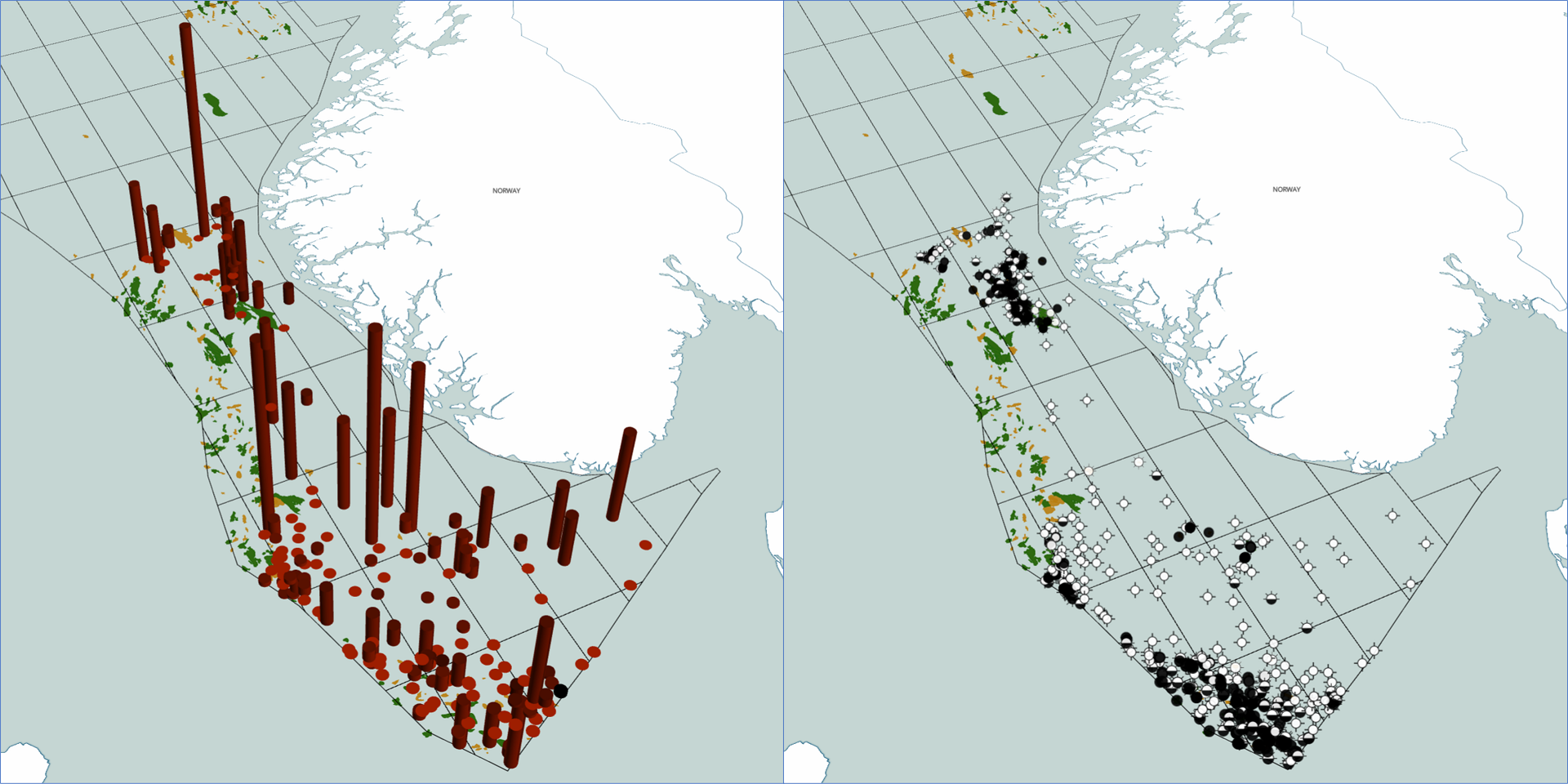New technology unlocks new insight from old wells

The map on the left shows all the wells included in the study. The one on the right shows wells with potential missed pay. The height of the columns indicates the thickness of the overlooked intervals.
7/2/2021 Exploring for oil and gas on the Norwegian shelf is still important – and old wells can help us discover more.
The Norwegian Petroleum Directorate (NPD) has been involved in two studies to see if machine learning and artificial intelligence can be used to study well logs from existing wells to find hydrocarbons that were potentially overlooked, so-called “potential missed pay”.
Potential missed pay are intervals in the wells that were not registered as hydrocarbon-bearing when the wells were drilled, but later analyses show there could be hydrocarbons there.
The NPD contributed to a study commissioned by British authorities that was completed in 2020. The study showed that there are numerous wells with potential missed pay.
Now, Earth Science Analytics (ESA) has followed up this study, on assignment from the NPD, and reviewed 545 wells in the North Sea. Most exploration wells in the North Sea have now been analysed to find potential missed pay.
Challenge the industry to discover more
In the most recently updated resource accounts, the NPD estimates that there is a lot of oil and gas left on the Norwegian shelf. As of now, about 1,250 exploration wells have been drilled in the North Sea. Despite many discoveries, more than half of the wells are dry.
"By releasing the analyses and underlying data from the studies, we want to challenge the industry to use this to discover new resources and gain new geological insight," says Torgeir Stordal, Director technology and coexistence at the NPD.
Well analyses can be very time-consuming, and are therefore only conducted in areas of particular interest. With new digital tools that use machine learning algorithms and artificial intelligence, industry players can now conduct well analyses for vast volumes of data in a short amount of time.
Important technology development
"New technology allows us to use existing data from the shelf to provide insight that would previously have required significant investments. The industry can use the analyses, and we hope that the new methods will inspire innovation and, over time, yield increased value creation," says Stordal.
ESA also integrated seismic with well data in the Fram area in the northern North Sea. They have created several three-dimensional datasets with the following reservoir properties: lithology, porosity and water saturation. Initially, the intent has been to test a new technology that enables faster and less expensive integration of well and seismic data.
The technology has the potential to provide new information about the subsurface that can contribute to improve the value of the underlying data, which will be beneficial for exploration and developing new and existing oil and gas fields.
Better understanding
The potential missed pay intervals were registered as such by ESA when the criteria for good reservoir properties and the possibility of hydrocarbon storage were satisfied. The project identified and classified about 350 such intervals according to thickness.
"The result can be used to improve our understanding of the petroleum systems in the North Sea and can hopefully lead to new discoveries," Stordal adds.
The Norwegian Petroleum Directorate will release the data from the analysis. This includes well logs prepared for machine learning and other analysis, lithology, porosity, water saturation, as well as intervals of potential missed pay.
The three-dimensional data sets from the Fram area will initially only be used for internal analyses.
Director Communication, public affairs and emergency response
Updated: 7/2/2021